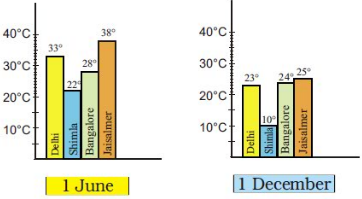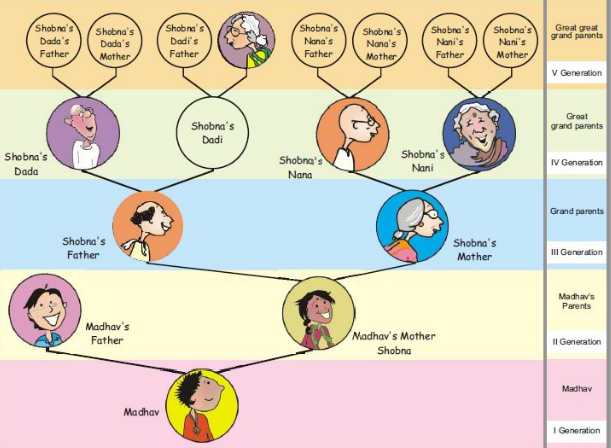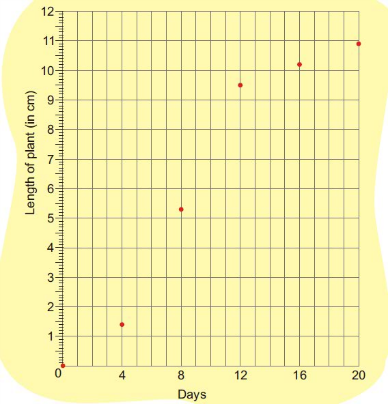GetStudySolution
Getstudysolution is an online educational platform that allows students to access quality educational services and study materials at no cost.
NCERT Solutions for class 5 Maths chapter 12 – Smart Charts
Back Exercise
Page No 159:
Question 1:
Yamini did a project ‘Animals and Birds’. She asked each child of her class about one favourite pet animal.
She used tally marks to record each answer. For example if someone said ‘cat’ she put one line | in front of ‘cats’. When someone said ‘cat’ again, she added a line. So (1).png) means two cats and
means two cats and (1).png) means 5 cats. In all 24 children said ‘cat’ was their favourite animal. Help Yamini complete the table.
means 5 cats. In all 24 children said ‘cat’ was their favourite animal. Help Yamini complete the table.
.png)
• Look at the tally marks and write the number for each animal in the table. How many children in all did Yamini talk to? • Which is the most favourite pet animal in this table? • Which pet will you like to have? What will you name it? Which other animals can be kept at home? Discuss.
Answer:
.png)
• Total number of students = 24 + 32 + 10 + 22 + 8 + 20 + 15 = 131 Thus, Yamini talked to a total of 131 students.
• Dog is the most favourite pet animal.
• I would like to have a dog. I will name it Bruno. The other animals that can be kept at home are cats, rabbits, parrots, etc.
Disclaimer: The answer of the third part may vary from student to student. The answer provided here is only for reference.
Page No 160:
Question 1:
Sumita stood on the road for half an hour and counted the number of vehicles passing by. She made a tally mark for each vehicle. This helped her in counting quickly the total number of vehicles in each group.

• Write the number of each vehicle in the table. • How many vehicles in all did Sumita see on the road in half an hour? • Auto rickshaws are thrice the number of trucks — true/false? • Make tally marks for 7 more buses, and 2 more trucks.
Answer:
•
.png)
• Total number of vehicles seen by Sumita in half an hour = 28 + 12 + 18 + 15 + 24 + 6 = 103 Number of trucks = 6
• Number of auto rickshaws = 18 = 3 × 6 So, the number of auto rickshaws is thrice the number of trucks. Thus, the given statement is true.
• Tally marks for 7 more buses = (1).png) Tally marks for 2 more trucks =
Tally marks for 2 more trucks = (2).png)
Page No 162:
Question 1:
In the EVS period, the teacher asked children whether they help their parents at home. There were different answers. Children named the work in which they help their parents the most. The teacher collected their answers and made a table.
| Help most in house work | Number of children |
| Going to the market | 47 |
| Washing utensils | 15 |
| Washing clothes | 3 |
| Making, serving food | 25 |
| Cleaning the house | 10 |
| Total children who said they help their parents |
Now you can fill the chapati chart to show the numbers given in the table.
.png) Look and find out Children who help in making or serving food are
Look and find out Children who help in making or serving food are
| (a) One-third of the total children (b) Half of the total children (c) One-fourth of the total children |
Answer:
| Help most in house work | Number of children |
| Going to the market | 47 |
| Washing utensils | 15 |
| Washing clothes | 3 |
| Making, serving food | 25 |
| Cleaning the house | 10 |
| Total children who said they help their parents | 100 |
Total number of children who said they help their parents = 47 + 15 + 3 + 25 + 10
= 100
The chapati chart is shown below: .png)
Correct: (c) Number of children who help in making and serving food = 25 Now, fraction of total children who help in making and serving food =
25100 =
14Thus, one-fourth of the total children help in making and serving food.
Page No 163:
Question 1:
Ask 10 of your friends about what they like to do most after school.
| What they like to do after school | Number of children |
| Watching TV | |
| Playing football | |
| Reading story books | |
Answer:
| What they like to do after school | Number of children |
| Watching TV | 2 |
| Playing Football | 3 |
| Reading story books | 1 |
| Listening music | 2 |
| Sleeping | 1 |
| Drawing | 1 |
Disclaimer: The answer may vary from student to student. The answers provided here are only for reference.
Page No 165:
Question 1:
These are two bar charts. These show the highest temperature (in degrees Celsius) in four cities, on two different days. The cities are Delhi, Shimla, Bangalore and Jaisalmer.

Find out from the bar chart — • Which city is the hottest on 1 June? • Which city is the coldest on 1 December? • Which city shows little change in temperature on the two days — 1 June and 1 December.
Answer:
• We find from the bar chart that Jaisalmer has the maximum temperature of 38 ∘C on 1 June. Thus, Jaisalmer is the hottest city on 1 June.
• We find from the bar chart that Shimla has the minimum temperature of ​10 ∘C on 1 December. Thus, Shimla is the coldest city on ​1 December.
• Temperature difference on 1 June and 1 December for Delhi = ​33 ∘C − ​23 ∘C = ​10 ∘C Temperature difference on 1 June and 1 December for Shimla = 22 ∘C − ​10 ∘C = 12∘C Temperature difference on 1 June and 1 December for Bangalore = 28∘C − ​24 ∘C = 4∘C Temperature difference on 1 June and 1 December for Jaisalmer = 38∘C − ​25 ∘C = 13∘C Thus, Bangalore shows little change in temperature on 1 June and 1 December.
Page No 166:
Question 1:
Earlier there were no rabbits in Australia. Rabbits were brought to Australia around the year 1780. At that time there were no animals in Australia which ate rabbits. So the rabbits began to multiply at a very fast rate. Imagine what they did to the crops! The table shows how rabbits grew every year.
| Time | Number of rabbits |
| Start | 10 |
| 1 year | 18 |
| 2 year | 32 |
| 3 year | 58 |
| 4 year | 105 |
| 5 year | |
| 6 year |
(1) After each year the number of rabbits was — (a) a little less than double the number of rabbits in the last year. (b) double the number in the last year. (c) 8 more than the number in the last year. (d) more than double the number of rabbits in the last year. (2) At the end of year 6, the number of rabbits was close to
| 400 | 600 | 800 |
(3) After which year did the number of rabbits cross 1000?
Answer:
(1) Correct: (a) From the given table, we find that each year, the number of rabbits is a little less than double the number of rabbits in the last year.
(2) After 6 years, the number of rabbits will be close to 400.
(3) After 8 years, the number of rabbits will cross 1000. Thus, after the year 1788, the number of rabbits will cross 1000.
Page No 167:
Question 1:
Madhav went to a wedding along with his parents. He met many relatives there. But he didn’t know everyone. He met his mother’s grandfather, but found that her grandmother is not alive. He also found that her Dadi‘s mother (grandmother’s mother) is still alive, and is more than a hundred years old. Madhav got confused. He couldn’t imagine his mother’s grandmother’s mother! So, Madhav’s mother made a family tree for him —

Madhav’s mother helped him understand her family with the help of this drawing. You can also find out about your older generations using such a family tree.
Answer these questions: (1) How many grand parents in all does Shobna have? (2) How many great, great grand parents in all does Madhav have? (3) How many elders will be in the VII generation of his family? (4) If he takes his family tree forward in which generation will he find 128 elders?
Answer:
(1) Shobna has 4 grandparents.
(2) Madhav has 8 ​great, great grandparents in all.
(3) Number of members in III generation of Madhav’s family = 2 Number ​of members in IV generation of Madhav’s family = 2 × 2 = 4 Number of members in V ​generation of Madhav’s family = 4 × 2 = 8 Number of members in VI ​generation of Madhav’s family = 8 × 2 = 16 And number of members in VII ​​generation of Madhav’s family = 16 × 2 = 32 Thus, there would be 32 elders in the VII generation of Madhav’s family.
(4) Number of members in VII generation of Madhav’s family = 32 Number of members in VIII ​generation of Madhav’s family = 32 × 2 = 64 Number of members in IX ​generation of Madhav’s family = 64 × 2 = 128
Thus, in the IX generation, number of elders in Madhav’s family will be 128.
Page No 168:
Question 1:
Amit sowed a few seeds of moong dal in the ground. The height of the plant grew to 1.4 cm in the first four days. After that it started growing faster. Amit measured the height of the plant after every four days and put a dot on the chart. For example if you look at the dot marked on the fourth day, you can see on the left side scale that it is 1.4 cm high. Now look at the height of each dot in cm and check from the table if he has marked the dots correctly.
| Day | Length of the plant (in cm) |
| 0 4 8 12 16 20 | 0 1.4 5.3 9.5 10.2 10.9 |
 Find out from the growth chart (a) Between which days did the length of the plant change the most?
(i) 0-4 (ii) 4-8 (iii) 8-12 (iv) 12-16 (v) 16-20
(b) What could be the length of this plant on the 14th day? Guess.
(i) 8.7 cm (ii) 9.9 cm (iii) 10.2 cm (iv) 10.5 cm
(c) Will the plant keep growing all the time? What will be its length on the 100th day? Make a guess!
Find out from the growth chart (a) Between which days did the length of the plant change the most?
(i) 0-4 (ii) 4-8 (iii) 8-12 (iv) 12-16 (v) 16-20
(b) What could be the length of this plant on the 14th day? Guess.
(i) 8.7 cm (ii) 9.9 cm (iii) 10.2 cm (iv) 10.5 cm
(c) Will the plant keep growing all the time? What will be its length on the 100th day? Make a guess!
Answer:
Yes, he marked the dots correctly.
(a) Correct: (iii) From the growth chart, we find that the length of the plant changes the most between the 8th and the 12th day. Length of plant in first 12 days = 9.5 cm Length of plant in first 8 days = 5.3 cm ∴ Increase in the length of the plant between 8–12 days = 9.5 cm − 5.3 cm = 4.2 cm
(b) Correct: (ii) The length of the plant on the 12th day = 9.5 cm The length of the plant on the 16th day = 10.2 cm So, the possible length of the plant on the 14th day must lie between 9.5 cm and 10.2 cm. Thus, among the given options, 9.9 cm is the best option.
(c) Disclaimer: The answer may vary from student to student.